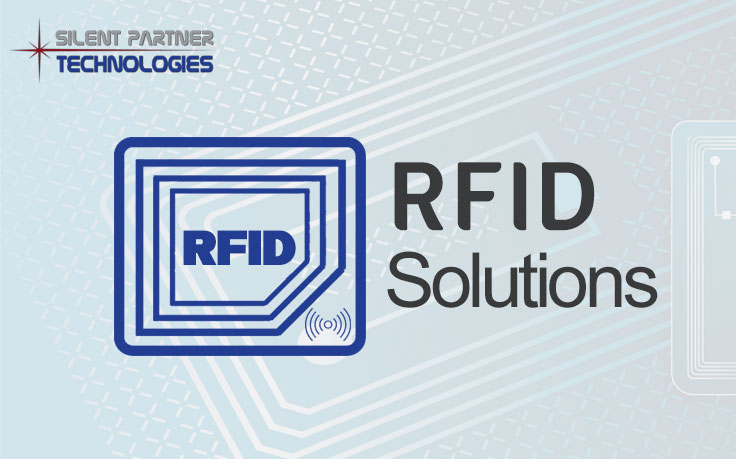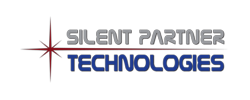Radio Frequency Identification (RFID) is an advanced technology that enables you to identify objects wirelessly using data transmitted through radio waves. It’s more like barcoding data from a label or tag by a device that collects data in its database. However, the RFID system has various advantages over solutions that use barcodes for asset tracking.
RFID solutions collect and transfer the information through radio waves. Unlike conventional vision-based barcode reading software, RFID does not need a direct line of sight to identify objects. Due to this, ultra-high frequency and high-frequency RFID systems can easily track a variety of products via the whole supply chain with utmost timeliness and accuracy.

RFID technology provides many advantages for companies and organizations. But you need to have the skill of implementing this technology to work well for the customers. This way, you can make the customers realize the pros of automatic identification in various areas of trace, track, control, and audit. Keeping in touch with these advances, this technology helps you to focus on consistent, practical, and affordable technologies. It is easier for clients to enjoy various benefits with minimal risk using RFID technology.
But before jumping into the advantages of RFID solutions, let’s find out how does this technology work.
HOW DOES RFID WORK?
RFID is a combination of various technologies referred to as Automatic Identification and Data Capture (or AIDC). The AIDC technique can automatically identify items, collect its data, and enter the collected data directly into a computer with negligible or no human intervention. RFID does all that using radio waves.
The RFID solutions comprise three components:
Tag: It consists of an antenna for transmitting and receiving signals. It also has an RFID chip that includes information about the items to which it’s attached.
Reader: This is the brand of the RFID system. It is important for handling the entire operation of the system. A reader helps in receiving and inquiring about the information included in a tag.
Management Software: This software enables you to easily manage all the data coming from the tag. Meanwhile, it enables users to make well-informed decisions and take appropriate action.
BENEFITS OF RFID TECHNOLOGY
Here are some major advantages of using RFID technology in your business:
1. Keeps track of assets and managing inventory
RFID technology is helpful to keep track of company assets and inventory management. Whether it’s finished products, production line, tools, industrial containers, or high-value equipment that usually go missing, the RFID solutions are best to provide a reliable and fast way for tracking those without counting each item manually.
All thanks to the RFID system, you can instantly see various items of one type, what condition they’re in, or their location during the process. You can easily track all these items from time to time – from receiving them in the store to using them as a finished product. It also makes the whole inventory management process quite easy. This system also performs audits, stock checks, and controls any sort of shrinkage. Even misplaced items can are easier to detect using the RFID system.
2. Saves money and time via automation
With RFID applications, you can automatically track the goods or movement of objects. You can straightaway upload the information to financial management system or ERP. This technology can cut the need for manual filling of outdated spreadsheets. Using fixed readers at the major points can also save time during the production. It is because it eliminates manual intervention.
3. Improves data availability and accuracy
Since there’s electronic transmission of data, RFID technology eliminates many errors – such as data duplication, transcription errors, and missed items when collecting data on a large scale simultaneously. It also enables workers to keep their data up-to-date on the status and whereabouts of different objects.
4. Improves health and safety
RFID solutions enable businesses to check when vehicles and equipment were last inspected and when is the next inspection. It also restricts the use of equipment in certain conditions to ensure the tools are not spoiled. With advanced RFID systems, you get an efficient way to report regimes, manage inspections, and help satisfy regulatory bodies or insurers. This way all the processes run smoothly in the health and safety department.
5. Upgraded quality and traceability
The RFID systems also help in ensuring that the items go through all the right processes and checks. For instance, a boiler needs regular inspection before delivering it to the customer. Hence, this system ensures the high quality of a product while decreasing the number of various goods. With RFID tagging, you can even ensure the traceability of tracking an item is right from its origin point.
6. Better production control
Since RFID can easily identify separate components or items, it is great for customized or complex manufacturing procedures. For instance, it helps in ensuring that the right volume of liquid is present in certain moulds. it is necessary to follow up for an accurate period. Furthermore, RFID helps certain components to fall on the right production line. It helps in improving efficiency and reducing waste.
7. Increases revenues
On reducing stock-outs and avoiding credibility gap between the actual stock in a warehouse and potential stock available for orders, RFID can offer a better service for forming competitive differentiation. It also offers better product information to the customers. Hence, promotes customer satisfaction while offering better opportunities for higher margins and sales.
8. Gives in-depth management information
All thanks to RFID technology, businesses get real-time and detailed information at different stages of a product’s or asset’s lifecycle. With in-depth management information, companies can better plan for different operational purposes. Businesses can even make use of these insights for enhanced efficiency improvements.
9. Shorter processing time
RFID technologies when integrated with various other supply chain and manufacturing technologies, like stock picking systems and automated pallet handling equipment, can decrease the processing time – from placement of order to dispatch and delivery.
10. Reduced cost & higher productivity
RFID applications also help in automating the data collection process about the location and movement of components, stocks, assets, or other objects. This system manages all the processes more quickly while reducing costs with better reliability and accuracy than manual procedures and other techniques, like barcoding. Eliminating the requirement of effort in form filling, RFID can make the whole data collection more productive at less cost. Even identifying products is much easier and simpler using RFID, unlike manual entry or barcode scanning of product details.
HOW TO IMPLEMENT RFID TECHNOLOGY
Want to implement the latest RFID technology in your organization with improved results? Continue reading the given eight steps to do so:
1. Find the Issue
You need to understand that a specific issue leads to a specific solution. For maximizing the advantages deriving from RFID adoption, it is important to find the inefficiencies and bottlenecks in the current processes. However, RFID is not the solution for all the issues. If a company has a proper organizational structure, the issues of radiofrequency technology alone won’t be able to solve the issue. It must be dependent on a company to get ready for embracing a comprehensive change program for eliminating all these issues.
2. Set measurable goals
A company needs to set measurable goals. It ensures that a company meets its expectations. It also assures that all actions done in the right field for getting the expected results.
3. Estimate costs
Before implementing RFID technology, a company needs to estimate the project costs. The type of technology and the type of activity performed can determine the cost of investment needed.
The cost estimates are different between implementation in a supply chain. Th supply chain is where you need RFID for tracking inventory. In a retail store, RFID is important for tracing valuable products. In both cases, a business needs different technologies incur different costs.
Accurately identifying the costs of projects is important when opting for RFID. It is because it provide you an overview of the estimated return on investment.
4. Map business operation
By mapping the business operations, you can identify situations. Plus, also get the systemic view of the flow through RFID technology. If the process analysis is not done right, the system cannot solve the issue no matter how much time and money you spend on it. So, careful mapping of business operations is essential.
5. Select the Right Technology
For every RFID project, it’s important to choose the right technology. The very first decisions to consider are whether to use a passive or an active tag. If you want to locate greater distances, you need to use an active tag. But for smaller objects placed in limited areas, you have to use a passive tag. The RFID tags come in various shapes, models, sizes, and applications.
Even the choice of readers is very important. These can be mobile or fixed and features different reading distances as per their power. Another important factor that affects RFID technology adoption is the environment. So, careful evaluation of a particular place and environmental conditions is important. It helps in selecting the right and suitable tags and devices
6. Team training
If a firm wants to use RFID technology, it needs to take appropriate measures. It ensures that all employees are well-versed with the RFID – what it is, how it works, its setbacks, and more. Besides that, the people involved in the main project must get in-depth training to use the technology. The more employees you train on managing RFID technology, the more effective the entire system is. Plus, you they can even intervene in the right manner, if needed.
7. Run a pilot
During the RFID implementation process, you need to consider running a pilot project (a small-scale project). It is important to get feedback on technology adoption. It even helps in evaluating the cost-benefit analysis. By running a pilot, it’s important for the system to change before implementing the right solution.
8. Expand the solution
When a pilot project is successful, it is vital to expand the RFID implementation solution to various areas. On completing the expansion project, the benefits and set goals are easy to achieve.
The RFID (radio frequency identification system) is successful when you follow the right steps and apply it to the defined requirements of your business.

